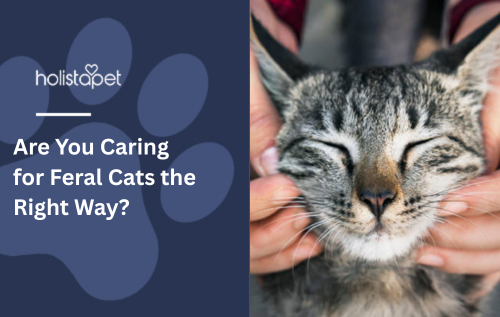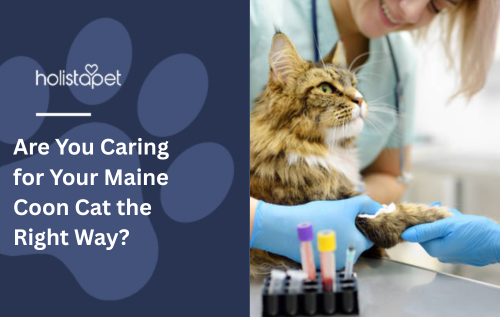Feral cats are resilient, independent, and often misunderstood. Whether you’ve recently discovered a colony in your neighborhood or you're a seasoned cat caretaker, knowing how to properly care for feral cats is essential—not only for their well-being but for the community too.
In this guide, we’ll cover the best practices for feral cat care, including feeding, shelter, and humane management strategies. If you're wondering how you can help without doing harm, read on.
 Understanding Feral Cats
Understanding Feral Cats
Unlike stray cats, feral cats have had little to no human contact. They are typically born and raised outdoors and often live in colonies. While they may not seek human affection, they still rely on compassionate care to survive and thrive.
Why Feral Cat Care Matters
Proper feral cat care helps:
-
Control overpopulation through TNR (Trap-Neuter-Return)
-
Reduce the spread of diseases
-
Improve the quality of life for outdoor cat colonies
-
Promote community harmony by minimizing nuisance behaviors
5 Essential Tips for Feral Cat Care
1. Start with TNR (Trap-Neuter-Return)
TNR is the most humane and effective way to manage feral cat populations. Cats are trapped using humane cages, spayed or neutered, vaccinated, then returned to their territory. This stops the breeding cycle and improves health.
2. Provide Consistent Food and Water
Feed at the same place and time daily. Choose high-protein wet food if possible, and avoid feeding near busy roads or heavily populated areas. Always provide clean water—especially in hot climates.
3. Create a Safe Shelter
Use insulated plastic bins or DIY feral cat shelters to protect cats from harsh weather. Place them in quiet, hidden locations away from foot traffic and predators.
4. Monitor the Colony's Health
Watch for signs of illness or injury. If you notice limping, discharge from eyes or nose, or unusual behavior, contact a local rescue or vet familiar with feral animals.
5. Respect Their Space
Feral cats are not pets. Don’t try to force contact. Observe from a distance and let them initiate trust—if they ever do.
 Frequently Asked Questions
Frequently Asked Questions
Q1: What’s the difference between a stray and a feral cat?
A: Stray cats are socialized but lost or abandoned. Feral cats are unsocialized and tend to avoid humans.
Q2: Can feral cats become pets?
A: It's rare, but possible—especially for kittens. Adult feral cats usually remain wary of humans and are happiest outdoors in their territory.
Q3: Is it illegal to care for feral cats?
A: Laws vary by city or state. Check your local ordinances. In many areas, TNR programs are legal and encouraged.
Q4: How often should I feed a feral cat colony?
A: Ideally, once or twice a day at consistent times. Regular feeding helps you monitor their health and schedule TNR efforts.
Final Thoughts
Caring for feral cats is a rewarding experience, but it requires commitment, knowledge, and compassion. By practicing responsible feral cat care, you’re not just feeding hungry mouths—you’re helping reduce suffering, stabilize populations, and build a better environment for animals and humans alike.
🐾 Helpful Notes:
-
Partner with local TNR organizations for support and resources.
-
Avoid overfeeding—leftovers can attract pests.
-
Mark cats that have been neutered with ear-tipping to avoid re-trapping.
-
Keep detailed records of the cats in your colony (photos, names, health updates).
Want to make a difference in your neighborhood?
Start small—just one bowl of food, one shelter, one TNR appointment at a time.


 CBD Oil for Cats - Fast Acting
CBD Oil for Cats - Fast Acting
 CBD Cat Treats - Easy Dose
CBD Cat Treats - Easy Dose
 CBD Calming Chews for Cats - Highly Rated
CBD Calming Chews for Cats - Highly Rated
 CBG Oil for Dogs and Cats - Loved by Thousands
CBG Oil for Dogs and Cats - Loved by Thousands





Leave a comment
This site is protected by hCaptcha and the hCaptcha Privacy Policy and Terms of Service apply.